Architecture in the 17th and 18th Centuries
A glimpse of Salem's exceptional architectural heritage is presented below. Most of these houses have furnished period interiors and are open to the public.
 Photo: Daniel Goodwin |
The Capt. John Turner House 1668
The House of the Seven Gables (open for tours)
54 Turner Street
One of the early traders and merchants in Salem, Captain John Turner owned a number of ships and made his fortune in the Barbados trade. He built his house, later to become famous as the House of the Seven Gables, near his wharf. The house remained in his family for three generations and underwent many renovations. It was bought in 1908 by Caroline O. Emmerton who was responsible for its restoration. |
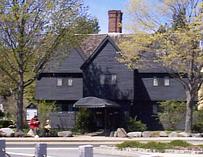 Photo: B. Wuertz |
The Jonathan Corwin House 1675
The Witch House (open for tours early May-early November)
310 Essex Street
The Witch House (open for tours early May-early November) The building that would come to be known as the Witch House was purchased in an unfinished state by Jonathan Corwin, heir to one of the largest Puritan fortunes in New England, in 1675. Grander than most homes in Salem at the time, the house boasted three steep gables, a deep porch, and wide, triple-casement windows. Corwin was a merchant by trade, but it was in his role as local magistrate that gives lasting renown to the house: the Witch House is the only remaining house in Salem directly tied to the 1692 Witch Trials. |
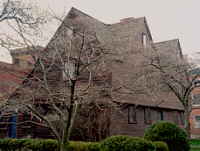 Photo: B. Wuertz |
The John Ward House c. 1684
Peabody Essex Museum (open for tours)
Brown Street opposite Howard
John Ward was a currier believed to have fled the plague in England about 1660. This First Period house was built at 38 St. Peter Street on a one-room plan. A one-room plan expansion was added before 1732 and an additional wing added during the 18th-century. The house was acquired by the Essex Institute in 1910 and moved to its current location during a two-year restoration which was one of the first of its kind in this country. The first floor rooms give a glimpse of 17th-century New England furnishings and domestic life. |
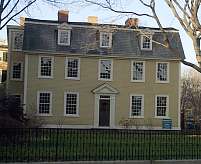 Photo: B. Wuertz |
The Crowninshield Bentley House c.1727-30
Peabody Essex Museum (open for tours)
126 Essex Street at Washington Square
The Crowninshields were one of Salem's liveliest and most ambitious families. This Georgian Colonial house was built by Captain John Crowninshield before his family rose to prominence and was home to four generations of Crowninshields up to 1832. The well-known Salem diarist, Reverend William Bentley, lodged here with the Crowninshields from 1791 to 1819. |
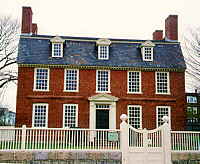 Photo: B. Wuertz |
The Derby House c. 1762
Salem Maritime National Historic Site (open for tours)
168 Derby Street
This Georgian Colonial house was built by Richard Derby for his son, Elias Hasket Derby (America's first millioniare), and new wife, Elizabeth Crowninshield. It is the oldest brick house in Salem. Richard Derby began as a Captain for the "codfish aristocrats" whose fortunes were built on fishing and trade. Richard's son, John, carried the first news of battles of Lexington and Concord to England aboard the Quero which sailed from Salem Harbor April 26, 1775. The building overlooks the wharves and warehouses built around the same time. |
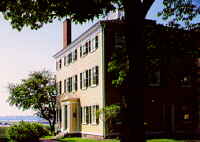 Photo: B. Wuertz |
The Hawkes House 1780
Salem Maritime National Historic Site
4 Custom Court - off Derby
This Georgian dwelling was designed by Samuel McIntire and built as a residence for Elias Hasket Derby, but the building was left unfinished when Derby purchased another residence in 1782. The building was used as a warehouse for Revolutionary privateers until purchased by boatbuilder Benjamin Hawkes in 1801 and converted into a two-family home. |
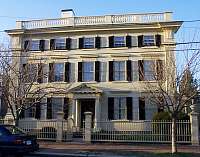 Photo: B. Wuertz |
The Peirce-Nichols House 1782, 1801
80 Federal Street
Peabody Essex Museum
The first owner of this house, Jerathmiel Peirce, and his partner, Aaron Waitt, developed one of the largest India trades in the United States. Samuel McIntire remodeled this early Federal dwelling in 1810 in what is believed to be his first major commission. |
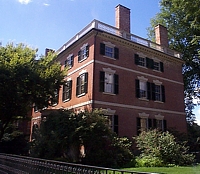 Photo: B. Wuertz |
The Gardner-Pingree House 1805
128 Essex Street
Peabody Essex Museum (open for tours)
Built by John Gardner during Salem's most prosperous era, this elegant Federal town house is widely admired in the published history of American architecture for its imposing but balanced and restrained facade. The lavish interior and exterior wood ornamentation were designed by Salem's master builder and carver, Samuel McIntire, at the height of his powers. |
